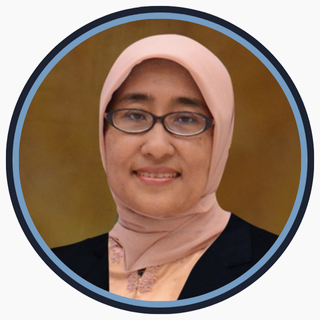Influence Of Demographic Factors And History Of Malaria With The Incidence Malaria In MORU PHC
Downloads
Malaria morbidity in the 2014 Public health center (PHC) of Moru with Annual Parasite Incident (API) parameter of 16.9%. This figure is still high compared to the malaria elimination target in Indonesia in 2030, which is <1%. The incidence of malaria is more common in children younger than 12 years. The high number of malaria causes poverty, low levels of learning achievement of children, and in pregnant women causes low birth weight in infants and death. The purpose of this study was to analyze the factors that influence the incidence of malaria in the work area of PHC of Moru, Alor Barat Daya District, Alor Regency. This study uses a cross-sectional design. The study population was all patients who had peripheral blood tests at the PHC of Moru laboratory unit from June to October 2015. The number of samples in this study was 173 respondents. The sampling technique is simple random sampling. Data collection instruments are questionnaires and observation sheets. The results of the study with the Chi-Square test found that the factors that influence the incidence of malaria were socioeconomic status (p = 0,000) and level of education (p = 0.001). The results of the logistic regression test found that ages 25–76 years (p = 0.025) and socioeconomic status (p = 0,000) were factors that influenced the incidence of malaria. Variables that influence malaria incidence from causal factors are demographic factors such as age, education level, socioeconomic status. So it is suggested that the socialization of malaria occurrences in community groups with elementary school education level. Community economic empowerment by utilizing dams for agriculture and lagoon for aquaculture. Evaluation of malaria incidence and follow-up of treatment management for malaria management will be more appropriate and targeted.
Arsin, A.A. 2012. Malaria di Indonesia - Tinjauan Aspek Epidemiologi. Makassar: Masagena Press.
Babba, I., Suharyo H., Suwandi S., 2009. Faktor-faktor risiko yang memengaruhi kejadian malarai. Epidemiologi, Volume 11, p. 8.
Badan Pusat Statistik RI, 2008. Analisis dan Perhitungan tingkat kemiskinan. Jakarta: BPS.
Dinas Kesehatan Kabupaten Alor. 2014. Laporan Malaria Dinkes Kab. Alor, tahun 2014. Kalabahi. Dinas Kesehatan Kabupaten Alor.
Dinas Kesehatan Provinsi NTT. 2012. Profil Dinas Kesehatan Provinsi NTT. Kupang. Dinas Kesehatan Provinsi NTT.
Firdaus A. S., Nuzulia I., Arni A. 2012. Gambaran Slide Malaria Berdasarkan Sediaan Darah Dari Kepulauan Siberut Mentawai Oktober 2011– Januari 2012. Jurlnal Kesehatan Andalas, 2014: 3(2)(-), pp. 95–96.
Friaraiyantini., Soedjajadi K., Ririh Y., 2006. Pengaruh Lingkungan dan Perilaku Masyarakat terhadap Kejadian Malaria di Kabupaten Barito Selatan Propinsi Kalimantan Tengah. Jurnal Kesehatan Lingkungan, 2, No. 2(-), pp. 121–128.
Gunawan S., 2000. Epidemiologi Malaria, dalam: Harijanto, P.N. (ed): Malaria: Epidemiologi, Manifestasi Klinis, dan Penanganan. Jakarta: EGC.
KEMENKES, RI., 2009. Eliminsasi Malaria di Indonesia. Indonesia, Patent No. NOMOR 293/ MENKES/SK/IV/2009.
Lestari. A.S dan Salamah M., 2014. Faktor-Faktor yang Memengaruhi Malaria pada Ibu Hamil di Provinsi Nusa Tenggara Barat, Nusa Tenggara Timur, Maluku Utara, Papua, dan Papua Barat.. Jurnal Sains dan Seni Pomits, Volume 3, No. 2, pp. 140–145.
Notobroto H.B., Atik Ch. H., 2009. Faktor Risiko Penularan Malaria di Daerah Perbatasan. Biostatistik dan Epidemiologi, Volume 8, No. 2, pp. 143–151.
Manumpa, S., 2015. Faktor yang Memengaruhi Kejadian Malaria Tropikana dan Tertiana (Studi di Wilayah kerja Puskesmas Moru, Kec. Alor Barat Daya, Kabupaten ALor - NTT. Skripsi. Fakultas Kesehatan Masyarakat Universitas Airlangga.
Saikhu, A. 2011. Faktor Risiko Lingkungan dan Perilaku yang Memengaruhi Kejadian Kesakitan Malaria di Propinsi Sumatera Selatan (Analisis Lanjutan dari Data Riset Kesehatan Dasar Tahun 2007). Jounal Epidemiologi, 3 No. 1 Tahun 2011 (Lingkungan, Perilaku, Malaria), pp. 8–17.
Tjitra E., Nicolas M., Paulus S., Noah W., Enny K., Muhammad K., Daniel A.L., Ric N.P., 2008. Multidrug-Resistant Plasmodium vivax Assosciate with Severe and Fatal Malaria: A Prospective Study in Papua, Indonesia. Helth and Medical Recearch, 5(6), p. 0890–0898.
WHO, 2014. World Malaria Report, Geneva-:WHO.
- Every manuscript submitted to must observe the policy and terms set by the Jurnal Berkala Epidemiologi
- Publication rights to manuscript content published by the Jurnal Berkala Epidemiologi is owned by the journal with the consent and approval of the author(s) concerned. (download copyright agreement)
- Complete texts of electronically published manuscripts can be accessed free of charge if used for educational and research purposes according to copyright regulations.

JBE by Universitas Airlangga is licensed under a Creative Commons Attribution-ShareAlike 4.0 International License.























